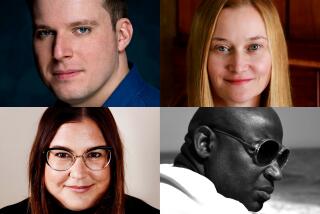NONFICTION - Feb. 23, 1992
FIRE IN THE BRAIN: Clinical Tales of Hallucination by Ronald K. Siegel (Dutton: $21; 256 pp.). Behind a burst of golden light, Moses appears, riding a bicycle and then exiting stage left. Following him is a throng of 39 tiny Moseses, riding tricycles with twinkling lights. Then a mountain springs up from the stage, and Porky Pig bursts from the top, stuttering, âThatâs all folks!â Finally, a black curtain descends bearing dozens of eyes. While seemingly a bad marriage of Andrew Lloyd Weber and Bertold Brecht, this production actually was staged in UCLA professor Ronald Siegelâs brain after he had ingested a heavy dose of marijuana.
Siegel is sober enough--in these pages at least--to realize that no spiritual playwright told Porky and Moses what to do: They were merely âstored visual images,â he writes, âcomprising elements from memories and fantasies now projected onto the mindâs eye.â Those who see drugs as a fast track to spiritual Epiphany are in fact Siegelâs favorite target here. Poking fun at a channeler whose trust he wins by standing naked in the California redwoods, for instance, Siegel watches the stringy-haired man contact his âdaughterâ Star, born âon the other sideâ in a Fourth Dimension three years ago. âConsciousness goes on,â Star reveals, âmerges with everything and becomes part of everything, part of the universal vibration.â
Why Siegel lets Star drone on at such length will be a mystery to readers familiar with his last book, âIntoxication.â While that was an impressively focused and disciplined analysis of how safe drugs could be designed to help us explore âcities of the mind,â âFire in the Brainâ is a rambling collection of stories only loosely connected to the subject supposedly at hand: hallucination. Whatâs most conspicuously absent is the science. Siegel points out, for example, that the number of eyes in the aforementioned curtain (30) is precisely the same number given by his research subjects. But rather than attempting to explain this striking convergence, he merely remarks that the eyes might be some kind of primal memory, like Carl Jungâs mandalas.
Still, Siegelâs patients have gifted him with such marvelous material--from the actress who saw voodoo people throwing darts at her whenever the camera lights were turned on to the couple united and then torn apart by shared neuroses--that even his ramblings rank with the better medical nonfiction.
More to Read
Sign up for our Book Club newsletter
Get the latest news, events and more from the Los Angeles Times Book Club, and help us get L.A. reading and talking.
You may occasionally receive promotional content from the Los Angeles Times.








